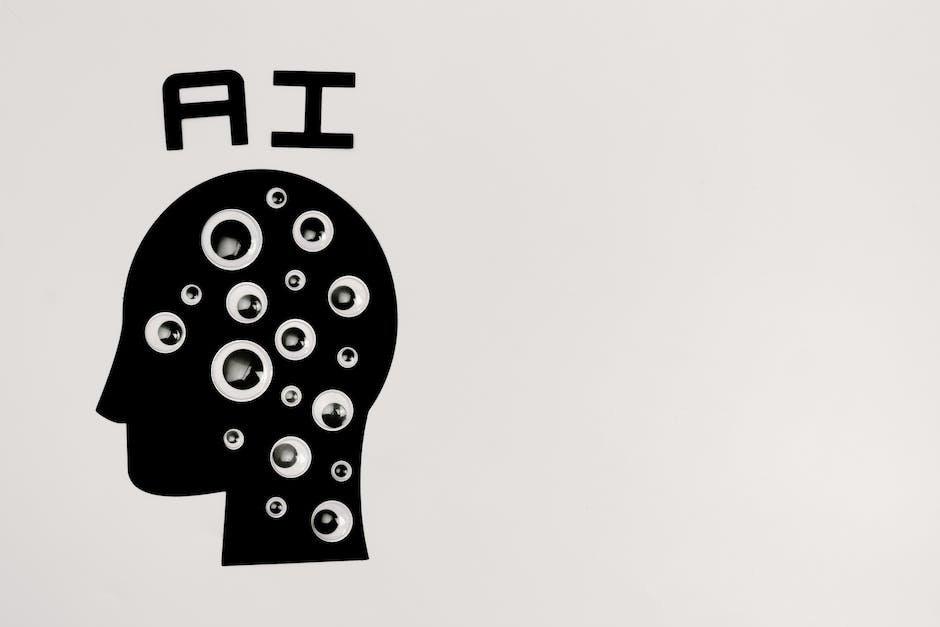We live in an era where technology and data dominate almost every aspect of our lives. Leveraging this data to make informed business decisions, predictive analytics—a blend of data, statistical algorithms, and machine learning techniques—is a rapidly growing sphere in the technological world. Entwined with the concepts of artificial intelligence, predictive analytics is enabling an era of informed decision-making by extrapolating from existing data points to predict future events or results. In this discourse, we aim to unravel the complexities of artificial intelligence and predictive analysis. We will elaborate on its evolution, significance, and role in transforming various sectors of modern society, while also choosing not to overlook its inherent challenges and ethical implications.
Understanding Artificial Intelligence and Predictive Analysis
Understanding Artificial Intelligence
Artificial Intelligence, often abbreviated as AI, refers to the simulation of human intelligence in machines that are programmed to think like humans. This includes learning from experiences, understanding natural language, recognizing objects and sounds, and problem solving. The goal of AI is to develop devices that can learn and solve problems independently.
The Evolution of AI
AI has not emerged overnight. Its foundation was laid in the mid-20th century when British mathematician and logician, Alan Turing, developed the concept of a universal machine that could simulate the functionality of any other machine or computer object. This marked the conceptual inception of AI. By 1956, the term ‘Artificial Intelligence’ was coined and the idea evolved into a distinct field of study. Various explorative epics like knowledge representation, machine learning, and natural language processing became concentration areas within AI research.
AI’s Role Today
Today, AI has permeated various industries, playing a vital role in many aspects of our everyday life. From voice-controlled personal assistants like Amazon’s Alexa to sophisticated gaming systems, from self-driving cars to online customer support, AI technology is everywhere. On the more professional side, AI powers financial institutions in fraud detection, allows medical professionals to spot anomalies in scans, helps farmers predict crop yields, and recommends products to online shoppers.
Predictive Analysis Explained
Predictive analysis, a subset of advanced analytics, uses statistical algorithms and machine-learning techniques to determine future outcomes based on historical data. It’s all about providing a best assessment on what will happen in the future. Essentially, the goal of predictive analysis is to analyze current data to predict future probabilities.
AI in Predictive Analysis
The integration of AI into predictive analysis has marked a huge leap forward. AI algorithms can access and analyze more complex data, faster and more accurately than human analysts. From predicting weather patterns to detecting potential health issues, from customer behavior forecasts to market trend analysis, AI in predictive analysis has a multitude of applications. For instance, Netflix utilizes predictive algorithms to recommend shows and movies based on user’s history and preferences.
Introduction to AI and Predictive Analysis
In today’s technologically advanced world, the integral role of Artificial Intelligence (AI) and predictive analysis is commendable. What began as a futuristic concept in the 1950s, AI has now drastically reshaped our world with its myriad of practical applications. One area where AI shines is in predictive analysis, where it’s enabling organizations to make data-driven, scientifically sound decisions. This has consequently solidified its position as an invaluable instrument across numerous business sectors. The power of AI in predictive analysis is growing exponentially, thanks to the integration of Big Data, advanced AI algorithms, and the continual rise of computational capabilities.
Despite the extraordinary capabilities of AI-driven predictive analysis, it’s not without flaws. For instance, it’s challenged by privacy concerns as vast amounts of personal data are required to function effectively. Its efficiency also directly hinges on the quality of this data – if the data is erroneous, the predictions made can be misleading, leading to potentially catastrophic conclusions.
As we continue to transition towards a predominantly data-centric society, it’s critical to employ AI and predictive analysis responsibly, with a keen consideration for ethical principles. The potential that AI holds is limitless; however, the responsibility of harnessing this potential sensibly rests on our shoulders.

Role of AI in Predictive Analysis
Exploring the Role of AI in Predictive Analysis
The impact of Artificial Intelligence (AI) is felt throughout numerous aspects of our daily life, with predictive analysis being a significant application. Predictive analysis, at its core, leverages existing data to deduce future events. AI’s involvement takes this process a step further by enhancing the prediction model, enabling more complex analysis and more robust predictions. Machine learning, a branch of AI, plays an indispensable role in predictive analytics, allowing systems to autonomously learn and adjust their behavior from data inputs, eliminating the need for explicit programming.
Application in Healthcare
Healthcare is one area where AI’s predictive capabilities have had a significant impact. AI systems have been developed to predict patient outcomes based on their medical history and other health data. For instance, Google’s DeepMind Health AI is capable of predicting acute kidney injuries 48 hours before they occur. This early prediction can potentially save lives and reduce the price tag associated with managing chronic cases. Watson, an AI algorithm developed by IBM, has prominently featured in oncology, offering potential treatment strategies for cancer based on patient data.
AI in Finance
In the financial sector, AI predictive analysis is used for several purposes including credit scoring, fraud detection, and investment predictions. AI models can analyze a customer’s financial and non-financial behaviors to predict the likelihood of a customer defaulting on a loan or credit card payment. In investments, AI is used to predict stock trends based on historical data and current market conditions. Risk management is another vital area where AI-driven predictive analysis provides outstanding value, helping organizations identify and mitigate financial risk efficiently.
Retail Industry Applications
In the retail industry, AI predictive analysis is used to forecast sales, manage inventory, and drive personalized marketing. For instance, Amazon uses AI-driven predictive analysis to recommend products to customers based on their past purchases, browsing history, and other customer’s purchase behaviors. This personalized recommendation system, backed by predictive analysis, has significantly increased Amazon’s sales.
AI Predictive Analysis Benefits
AI predictive analysis offers multiple benefits across various industries. In addition to increasing efficiency, it enables businesses to harness vast amounts of data to improve decision making and strategy development. It also allows for real-time predictions, which can help businesses adjust to changes immediately. Furthermore, the adoption of AI-driven predictive analysis can lead to cost savings by reducing waste, preventing fraud, and optimizing resource allocation.
AI’s Prominent Success Stories
AI’s predictive analysis capabilities have had substantial successes across various sectors. For instance, PayPal used machine learning-powered predictive analysis to reduce its false alarm rate for fraudulent transaction detection by half. The medical technology firm Medtronic collaborated with IBM Watson to create a predictive AI system for diabetes, which can predict hypoglycemic episodes three hours before they happen with 85% accuracy.
The Power of AI in Transformation
AI’s accelerated advancement in the predictive analysis sector is a testament to its immense potential. Success stories across various fields such as healthcare, finance, retail among others, offer insights into how AI’s predictive capabilities enable businesses and organizations to strategize effectively and efficiently towards success.

Predictive Models in AI
Delving into AI’s Predictive Models
The predictive models in Artificial Intelligence (AI) act as the driving force behind machine learning. They predict the potential outcomes based on historical data. Utilizing different algorithms to scrutinize past and current data, they identify patterns to provide a projection of future events or trends. This prediction capability is versatile, having applications in various sectors ranging from weather forecasting, stock market trends, to understanding consumer behavior.
Regression Models: The Basics and Beyond
One of the most commonly used predictive models is the regression model. It investigates the relationship between a dependent (target) and independent variable(s) (predictor). These models may either be simple (with just one predictor and one outcome) or multiple (a single outcome but multiple predictors).
Linear and logistic regressions are two subtypes popularly used for prediction. Linear regression predicts continuous outcomes like a person’s weight or a stock’s price, while logistic regression is used to predict categorical outcomes, such as whether an email is spam or real.
One merit of regression models lies in their simplicity and computational efficiency. They are also size agnostic, meaning they can handle large datasets well. However, they assume a linear relationship between predictors and the outcome and may not perform well with complex, non-linear data structures.
Decision Trees: Mapping Choices and Outcomes
Decision trees, another vital predictive model, visualize decisions and their possible consequences. They are straightforward, easy to understand, and useful in both classification and regression problems. Decision trees use binary or dichotomous spitting to divide the data into two new groups based on a cutting point in a chosen input variable.
One of the significant advantages of decision trees is their transparency as they provide a clear picture of the prediction path. They don’t require data scaling and can deal with both categorical and numerical data. However, they are prone to overfitting, a situation where a model learns the training data too well and performs poorly on new, unseen data.
Neural Networks: Emulating Human Thinking
Neural networks, mimicking the human brain’s functioning, are designed to recognize patterns. They are comprised of interconnected layers of nodes or “neurons” that ‘learn’ from data by adjusting the importance, or weight, of input variables as they minimize the difference between predicted and true outcomes.
Deep Learning, a subset of machine learning, leverages these large-scale neural networks to provide powerful predictive capabilities. Deep learning models can process massive amounts of data and identify intricate patterns in data sequences, making them suitable for prediction tasks.
While powerful and highly flexible, neural networks require extensive data and computational resources. Their ‘black box’ nature also makes interpretability a challenge.
Exploring the Practical Applications of Predictive AI Models
AI’s use in predictive analysis is significantly affecting numerous sectors. Regression models are particularly valuable in gauging stock or housing market trends, while decision trees are being employed as diagnostic tools predicting chances of diseases in the healthcare field. In addition, neural networks are gaining massive traction, aiding in image and speech recognition and predicting naturally occurring disasters such as earthquakes.
These innovative AI models are transforming the landscape of predictive analysis, empowering businesses to streamline processes, enrich customer relations, and make strategic decisions based on reliable data. That said, to ensure successful implementation, factors such as nature of the task, type of data, and available computational resources need to be meticulously considered.

Ethical Implications and Potential Risks
Addressing Ethical Implications in AI Predictive Analysis
While predictive analysis using AI is efficient, it can also lead to serious ethical dilemmas, primarily related to privacy. AI systems inevitably gather and process large amounts of data, raising potential issues regarding personal privacy infringement. For instance, AI’s capacity to predict human behaviors can unintentionally expose personal information such as health records, religious perspectives, or political leanings. Moreover, methods of data collection may violate privacy norms if individuals are not completely aware that their personal data is being gathered for predictive analysis purposes.
Data Misuse Possibilities
The risk of data misuse is another serious concern. While predictive analysis can be advantageous, these benefits could be overshadowed when data is used for malicious intents. For example, personal data analyzed by AI systems could be exploited for fraudulent purposes or be sold to third-party companies without the individuals’ consent. Similarly, data mishandling, either intentionally or due to negligence, can result in information leaks, exposing individuals to potential risks and harm.
AI Biases
Biases present in AI are another critical ethical issue. Machine learning algorithms use data from the past to make predictions about the future. If historical data mirrors societal prejudices, the AI system would likely replicate these injustices, leading to biased outcomes. A classic example is the racial bias in predictive policing, where AI systems influenced by biased historical data disproportionately target certain racial or ethnic groups.
Other Ethical Dilemmas
Other ethical dilemmas include the potential for AI prediction systems to infringe upon human agency and free will. For instance, if an AI system can predict an individual’s actions with high accuracy, questions arise about whether it impinges on human decision-making. Moreover, transparency issues surface, as AI decision-making processes are often complex and not fully understood by end-users. This opaqueness can raise concerns about accountability, especially when predictive analyses lead to negative impacts.
Ensuring Ethical Practices in AI Predictive Analysis
Maintaining ethical practices within AI predictive analysis is indispensable. It necessitates the implementation of thorough data governance frameworks, which include rigorous data security precautions, substantial user consent protocols, and appropriate data management procedures. Promoting transparency within AI processes is equally paramount, as it provides lucid explanations of how AI systems function and utilize data, thereby mitigating the possibility of misinterpretation or misuse.
Furthermore, initiating fairness measures within the algorithms can help negate any inherent biases within AI systems. Conducting regular audits and updates of machine learning models can verify their fairness and absence of bias.
Creating an ethically conscious culture within AI industries is also crucial. This includes adhering to ethical guidelines throughout the AI system life cycle, from the initial data collection stage to the eventual utilization of predictive analyses. Institutions should constantly investigate, comprehend, and address the ethical consequences of their AI technologies, ensuring alignment with societal norms and values.
Lastly, continuous dialogue is needed among AI industry players, policymakers, and the public to better understand and confront the intricacies of ethical issues related to AI predictive analysis. This dialogue can further lead to the creation and enforcement of suitable regulations and laws, thereby encouraging the responsible use of AI.

The Future of AI in Predictive Analysis
The Role of AI in Predictive Analysis
Artificial Intelligence (AI) possesses a vital role in augmenting predictive analysis across numerous industries and business operations. Predictive analysis leverages both historical and current data to anticipate future events, trends, and behaviors. With the assistance of AI, this process becomes more efficient and reliable as AI deals with enormous datasets and generates detailed predictions with apt accuracy by employing machine learning algorithms.
Current Trends
The ongoing convergence of AI and predictive analytics is already seen in significant areas like customer insights, fraud detection, revenue prediction, and overall risk management. Some businesses are using AI-driven predictive models to identify future consumer behaviors, propensities to buy, and customer preferences or aversions. In healthcare, predictive analytics can forecast disease outbreak patterns or predict patient reactions to certain medications based on historical and real-time data.
Progress in AI, namely in the field of deep learning
Progress in AI, namely in the field of deep learning, enables more robust and accurate predictions. Deep learning models utilize large sets of labeled data and neural network architectures to learn and make predictions. The increasing amount of available data, plus advancements in computational power, makes deep learning-based predictive analysis potential for the future.
Upcoming Technologies
As we venture into the future, we would see more sophisticated AI technologies influencing predictive analytics. Quantum computing, a technology still in its nascent stage but possessing immense potential, may play a pivotal role in predictive analytics. By processing complex calculations simultaneously owing to its fundamental nature, quantum computers will enable even more accurate predictive models capable of analysis on an unparalleled scale.
We will also see the rise of Automated Machine Learning (AutoML) platforms designed to democratize AI by making machine learning more accessible to non-experts and improving efficiency of experts. This technology allows more organizations to incorporate AI predictive tools in their operations, whether to predict customer churn rates, detect potential fraud, optimize logistics, or forecast sales.
Expert Views and Expectations
Leading experts in the field of AI and data analytics anticipate an extensive and transformative role for AI in predictive analytics. Bernard Marr, a best-selling author and consultant in big data analytics and strategy, believes that AI development will significantly transform predictive analytics. He states that the near-real-time predictive analytics made possible by AI will enable businesses to respond swiftly to changing circumstances.
Daniel Newman, Principal Analyst of Futurum Research, contends that further advancements in AI will bring about hyper-accurate predictive analytics that can bring about “uncanny accuracy” in forecasting.
In conclusion
In conclusion, predictive analytics will continue to be a major field of development for AI technologies. The strides made in deep learning, Quantum computing, and AutoML platforms establish a promising groundwork for significantly advanced predictive capabilities, transforming decision-making processes in various industries, and dictating new business strategies. Experts in the field anticipate a future where predictive analytics are so accurate they significantly reduce uncertainty and risk.

As we navigate the labyrinthine universe of AI and predictive analytics, it becomes clear that the potential of this technology stretch vast and wide, permeating various sectors — from healthcare to finance. Despite its challenges, such as privacy concerns and the potential for data misuse, proactive measures and comprehensive guidelines can chart a way forward. Venturing further, we must continuously re-evaluate methodologies and ethical considerations. The future poised for AI in predictive analysis appears robust and transformative, heralding a new era of potential innovations and advancements. This journey is not without its tests and trials, but through adaptation, learning, and innovation, we are set to unlock a realm of untapped opportunities.


